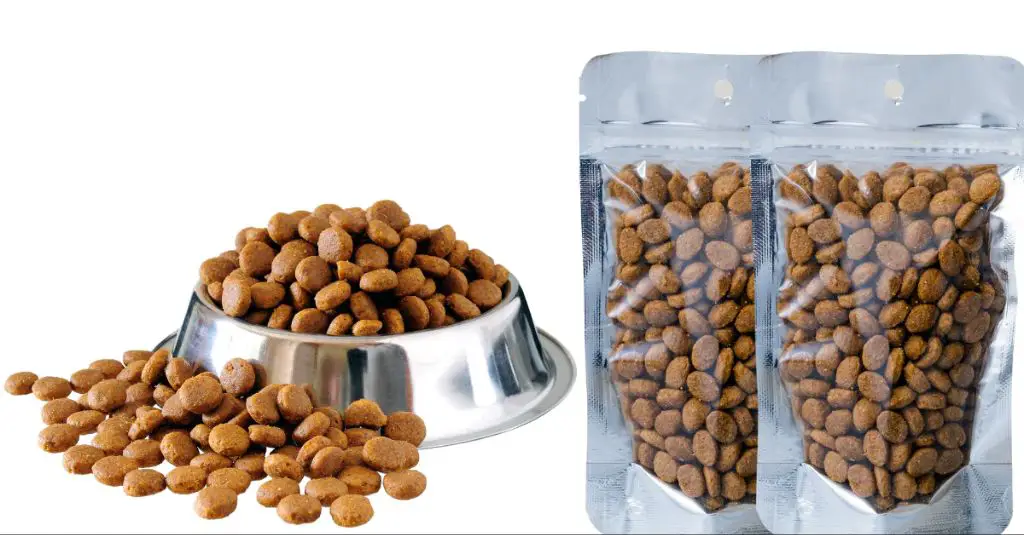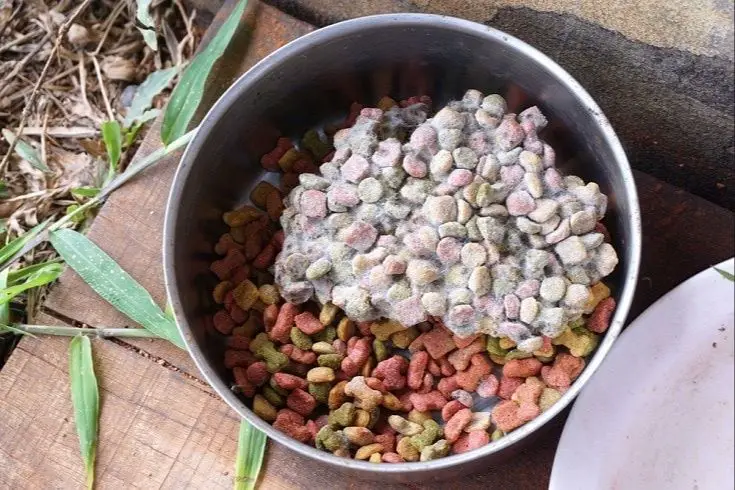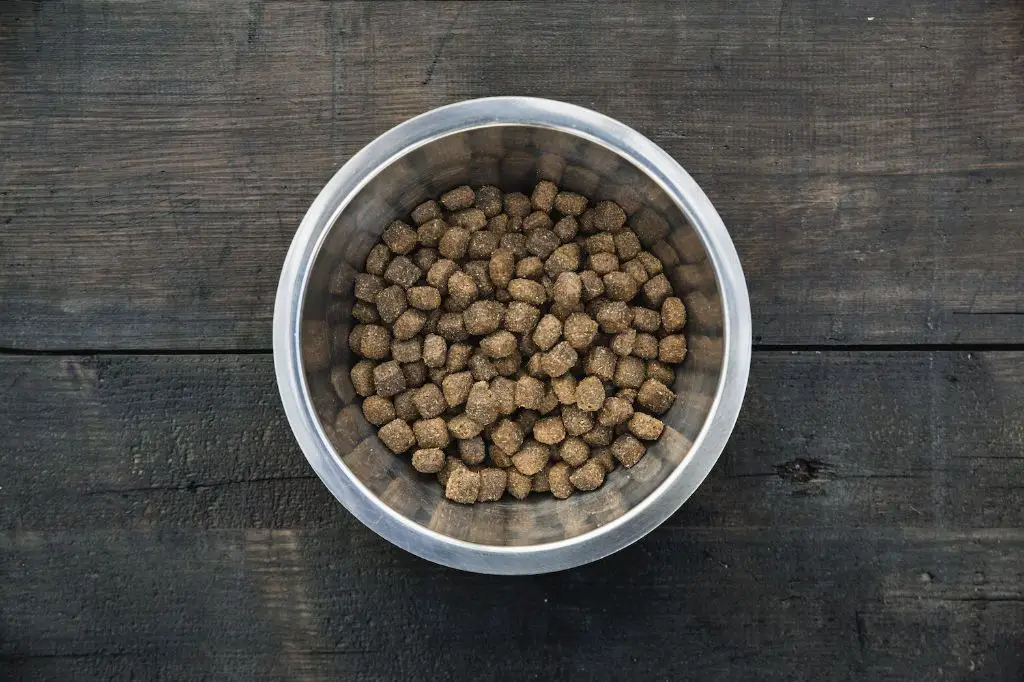An Introduction to How Long You Can Use Dry Dog Food
Proper storage of dry dog food is crucial to ensuring your furry friend gets the nutrition he needs. Stale or spoiled kibble can cause gastrointestinal upset and provides less nutritional value over time. This article will cover everything you need to know about maximizing the shelf life of dry dog food. We’ll explore optimal storage methods, signs of spoilage, expiration dates, and when it’s time to throw out the bag. With the right techniques, you can keep your pup’s kibbles fresh and delicious for months.
Dry vs Wet Dog Food
The primary difference between dry and wet dog food is shelf life. Dry food contains much less moisture than wet food, allowing it to stay fresh and edible for a much longer period. Wet food typically contains around 75% moisture whereas dry food contains about 10% moisture. The low moisture content in dry kibble helps prevent spoilage and contamination from bacteria, yeast, and mold.
The canning process used for wet dog food eliminates pathogens and microorganisms, but once open, wet food must be refrigerated and used quickly. Unrefrigerated wet food can spoil in just a couple hours in the summer or within a day even when kept at room temperature. Any unused portion should be thrown out.
On the other hand, an unopened bag of dry dog kibble can last for weeks or months when stored properly, thanks to the low moisture content creating an unfavorable environment for microbial growth. Storing dry food in an airtight container further prolongs shelf life. The texture and nutrients also remain relatively stable over time compared to wet food.
Factors That Shorten Shelf Life
There are several factors that can shorten the shelf life of dry dog food and cause it to spoil faster:
Exposure to Air, Light, and Moisture
Once opened, dry dog food is exposed to air and light which speed up the oxidation process causing it to go stale. Moisture from the air can also get into the bag, causing mold and bacteria growth.
Temperature Fluctuations
Temperature changes from hot to cold expand and contract the food, damaging its structure. This allows more air to penetrate the kibble leading to faster spoilage. High temperatures also promote moisture loss and faster staling.
Bag Integrity
Any rips, tears or holes in the bag allow air, light, and moisture to get in. This speeds up spoilage exponentially. Always store food in its original airtight packaging or an airtight container.
Optimal Storage Conditions
To maximize the shelf life of dry dog food, store it properly in a cool, dry place. The ideal storage location is a cupboard, pantry, or sealed container. Avoid humid areas like the garage or basement where moisture can get into the dog food bag and cause early spoilage.

For the longest freshness, store dry dog food in an airtight container like a plastic bin or even the original bag tightly sealed. This prevents moisture and pests from contaminating the food. Transferring from the original packaging to an airtight container is an extra step that can extend shelf life.
Keep dry dog food out of direct sunlight and away from heat sources like appliances or heating vents. Light and heat degrade the fats and proteins in kibble over time. Store in a dark pantry or opacity container.
With optimal storage conditions – a cool, dry place in an airtight container away from light and heat – an unopened bag of dry dog food can last 6-12 months past its production date before quality begins to decline.
Signs of Spoilage

There are a few key signs to look out for when determining if dry dog food has spoiled:
Color/Texture Changes
The kibble or bits may exhibit color changes from their original shade – usually looking more dull, faded, or discolored. The texture may also become hard, crunchy or stale rather than crisp. These are indications that the food is past its prime.
Rancid Smell
Rancidity is one of the most telling signs of spoiled dry dog food. If you notice an unpleasant, bitter, sour or chemically smell, that’s a clear giveaway that the food has gone bad and should be discarded.
Mold
The presence of mold is a definite sign the food is spoiled. You may see fuzzy growth on the kibble itself or visible throughout the bag. This indicates the food has been exposed to moisture and high humidity levels, allowing mold to grow.
Food Freshness Tests
There are a few simple ways to check the freshness of dry dog food at home:
Look, Feel, Smell
Examine the kibble visually and feel the texture. Dry dog food should be free of mold, clumping, and foul odors. It should have a crunchy bite and consistent shape. Discoloration, texture changes, and unpleasant smells can indicate spoilage.
Float Test
Place a few pieces of kibble in room temperature water. Fresh kibble will sink right away, while stale kibble can float or take longer to sink which means it has absorbed moisture and expanded. Floating pieces or a delay before sinking can signify decreased freshness.
Expiration Dates

Expiration dates and “best by” dates provide useful but imperfect guidance for determining how long dry dog food will stay fresh. Manufacturers apply these dates well ahead of when the food is likely to go bad.
An expiration date indicates the last date by which the manufacturer guarantees the full quality of unopened dry dog food. Past this date, key nutrients may start to degrade, but the food should remain safe to eat.
A “best by date” indicates optimal quality rather than safety. When stored properly, unopened dry dog food should maintain good quality up to 6 weeks past this date. However, the food may lose some nutritional value and undergo subtle changes in texture and flavor.
Once opened, dry dog food generally lasts 4-6 weeks past its “best by” date if stored correctly. The exceptions would be foods with shorter shelf lives due to being high in fats and oils. In those cases, opened bags may only last 2-3 weeks past the date.
Remember that expiration and “best by” dates are not definitive deadlines. Use other indicators like appearance, smell, and taste alongside the date to determine if your opened or unopened bag of dry dog food is still safe and nutritious.
Safety Concerns
When dry dog food expires or goes bad, two major risks are foodborne illness and loss of nutrients. Exposure to heat, light, moisture or air causes nutrients like vitamins, antioxidants and healthy fats to break down over time. This can make the food less nutritious for your dog. Fat oxidation also causes rancid odors and flavors that may put your dog off their food.
More importantly, spoiled dry dog food can potentially cause illness. Mold growth, bacterial overgrowth and toxins can develop in expired kibble. Eating rancid dog food increases the chance of gastrointestinal issues like vomiting, diarrhea, and inflammation. In rare cases it may also cause liver or kidney problems. Pets with weaker immune systems are especially vulnerable.

Watch for signs of food borne illness after feeding expired dry food, like abdominal pain, lack of appetite or lethargy. Discontinue use of any rancid pet food. Throwing away expired dry dog food can prevent unnecessary health risks.
When to Toss It
Even when stored properly, opened dry dog food should not be kept for more than 4-6 weeks. Unopened bags can be safely stored for approximately 6 months past the expiration date or best by date. However, it’s best to err on the side of caution when determining if dry dog food is still fresh and safe to feed.
Look out for signs of spoilage like off odors, texture changes, and discoloration. Taste a small amount periodically to check for staleness. When in doubt, remember it’s better to waste a little food than risk your dog’s health. Dry dog food is relatively inexpensive, so don’t take chances just to save a few dollars.
Conclusion
In summary, the shelf life of dry dog food can vary quite a bit depending on several factors like the ingredients, storage method, packaging, and environment. Some key takeaways to extend the freshness and avoid spoilage include:
- Store in a cool, dry place in an airtight container
- Check expiration date before purchasing
- Close bags tightly and minimize air exposure
- Keep food away from humidity, extreme temps, pests, etc
- Freeze portions to prolong freshness
- Routinely check for signs of staleness, mold, insects, etc
Pet owners should be vigilant about monitoring their dog’s food and tossing it at the first signs of spoilage. Trust your nose and eyes, and if in doubt, throw it out. Getting into the habit of buying smaller bags and freezing portions can help reduce waste. With proper storage and rotation, most quality dry kibble should stay fresh for several months past the printed date.